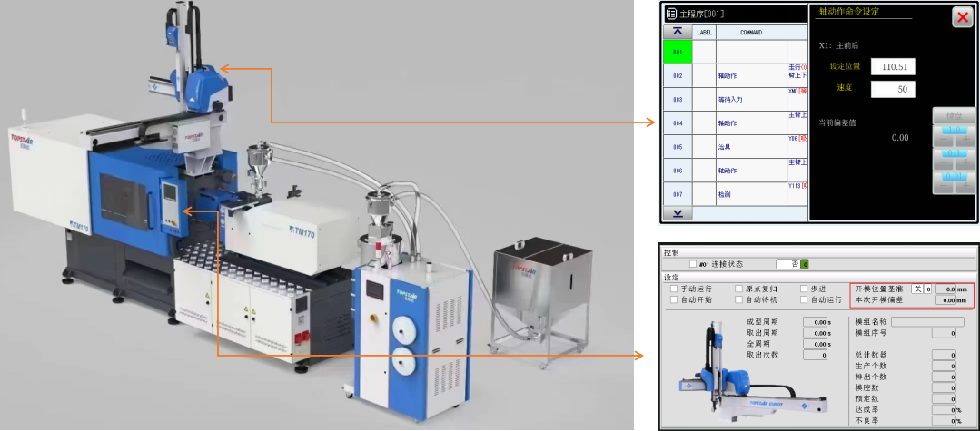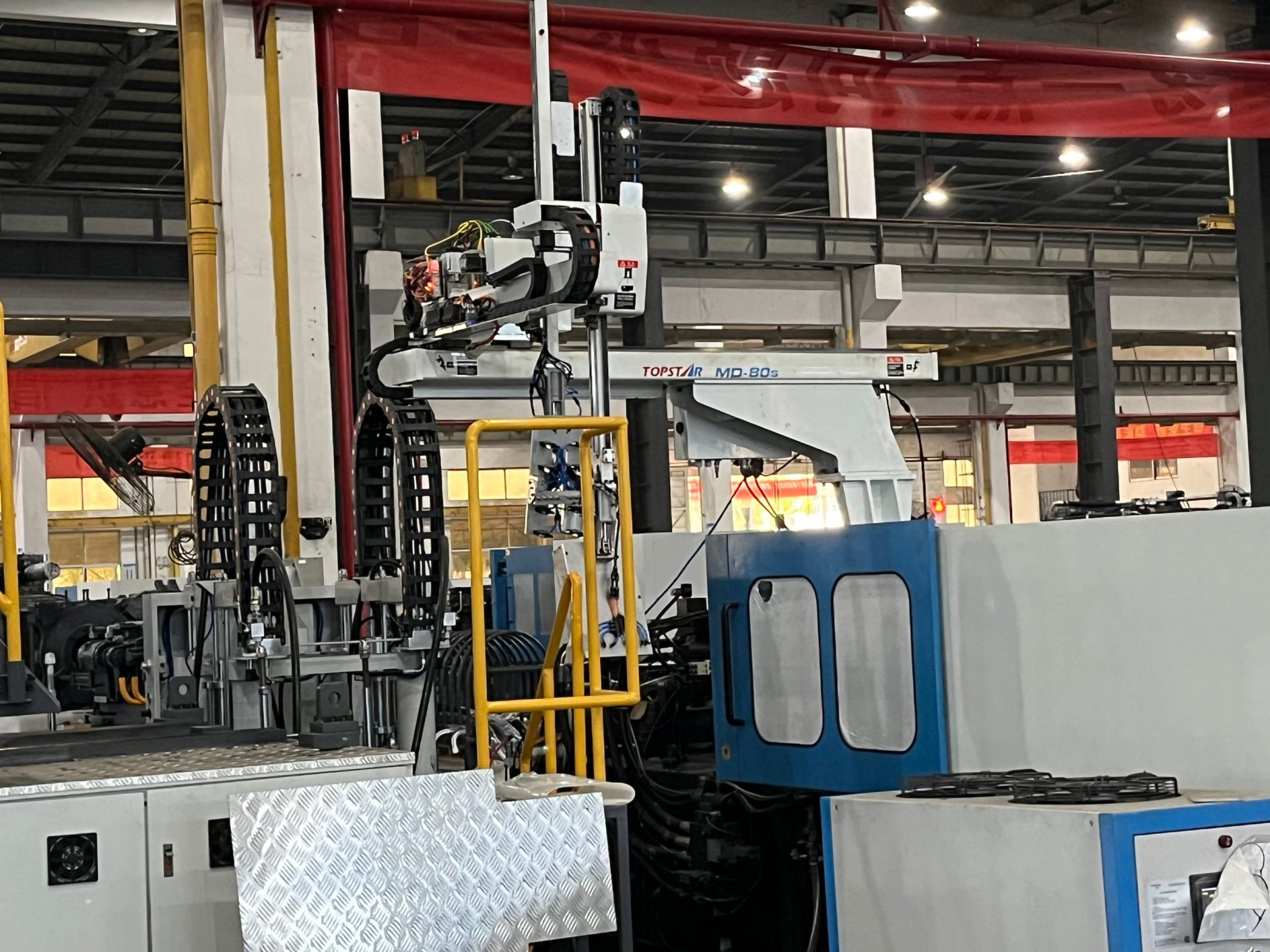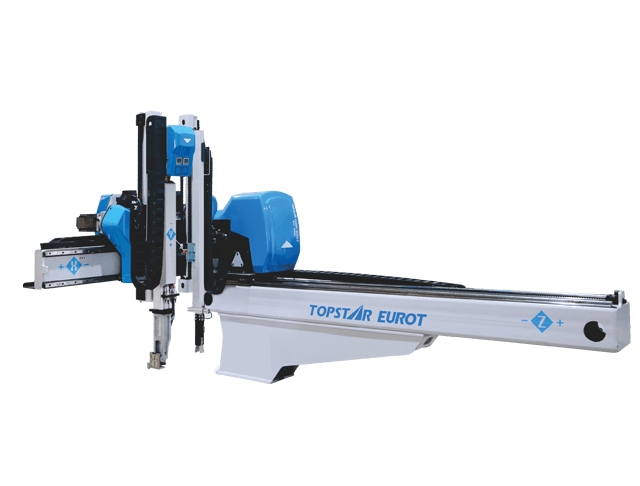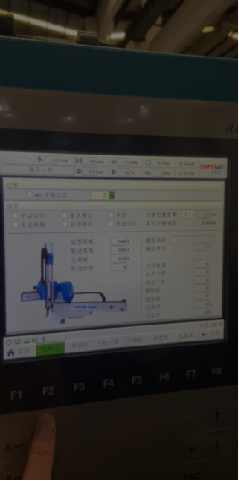Is the injection molding robot compatible with different injection molding machines?
2024/03/29 By Topstar

Regarding injection molding robot, when we communicate with users at offline exhibitions or online, they will ask whether they are compatible with different injection molding machines. Therefore, I will share with you this guide to introduce and answer this question. It allows you to understand the extensive connection between injection molding machines and injection molding robots from different dimensions and angles.
Learn about compatibility in the field of injection molding!
Before understanding the compatibility between injection molding robots and injection molding machines, let me briefly explain the compatibility in the field of injection molding. It mainly refers to whether various materials, molds, machines, and processing parameters are suitable for working together seamlessly. This includes the compatibility between materials. Different materials have different characteristics, such as melting point, viscosity, and shrinkage, directly affecting molding. Compatibility between molds is equally essential. We must ensure that the design and construction of our molds align with the materials used and the required parts. The other is compatibility between machines, which refers to the ability of the injection molding machine and other auxiliary equipment to process materials and molds effectively.

Injection molding robot communication protocols and integration
Communication protocols are the key to compatibility between injection molding machines and injection molding robots, enabling real-time data exchange between injection molding robots and injection molding machines to achieve synchronous operations and precise coordination. Standard communication protocols include Profinet, Modbus, and RTU. Topstar’s injection molding robot will be equipped with an RS485 communication interface as standard. When the two are integrated and compatible, the injection molding robot can replace humans as the arm of the injection molding machine to perform tasks such as disassembling parts and placing inserts.

Compatible interface design and interoperability
Interface design is the physical and digital aspects of the interaction between the injection molding robot and machine. Physically, the interface should allow easy integration of the robot into the molding cell, taking into account space, accessibility, and safety. From a digital perspective, the interface must select a compatible communication protocol between the injection molding machine and the robot to ensure data exchange and operational synchronization. This interface should have user-friendly controls allowing operators to program, adjust parameters, and monitor production. In addition, interoperability between the two can be achieved through open architecture and standardized interfaces.

Injection molding robot physical adaptability and mounting options
A key aspect of physical adaptability is the flexibility of injection molding robot mounting options. They must be installed in various configurations, with physical adaptability extending to their range and payload capabilities. Different sizes and configurations of injection molding robots are suitable for compatible machines with varying clamping forces. Size and configuration also affect the mounting options on the injection molding machine. Finally, it would be best to consider the compatibility of other ancillary equipment, such as conveyors, chutes, or parts handling systems, into the overall layout of the injection molding machine.
Flexibility and compatibility across multiple machine environments
Injection molding robots are compatible with various injection molding machine sizes and configurations. From 100-300 ton machines for micro-molding to 1000-2000 ton machines for producing oversized parts, injection molding robots can be customized to meet the specific needs of each application. In addition, it is highly adaptable to different manufacturing environments, including medical device facilities and high-precision production environments. Specialized robot models equipped with cleanroom-compatible materials and designs can meet these environments’ stringent cleaning and hygiene standards. Utilizing control systems and software when dealing with multiple machines enables them to synchronize their actions with various machines.
Ultimately
Injection molding robots and injection molding machines are compatible by determining the communication protocol, interface design, and other aspects of the settings. So boldly combine the two to work together, which will significantly improve the work efficiency of your workshop.
TRENDING POSTS
- What factors can cause delays in the injection molding process of plastic molding machine? 2024/03/29
- Exhibition Review| Topstar participates in InterPlas Thailand 2024 2024/03/29
- Star Case | Topstar helps Santong upgrade its intelligent plant 2024/03/29
- Topstar Special | National Science and Technology Workers Day 2024/03/29
HOT TOPIC
- 3 in 1 Compact Dehumidifying Dryer
- 5-axis CNC machine
- accuracy
- Air Chillers
- all electric injection molding machine
- All-electric injection molding machines
- and overall production quality. Therefore
- AP-RubberPlas
- automated injection molding machine
- Automation changed engineering
- automation of injection molding robots
- auxiliary machine
- Bench Injection Molding Machine
- Cabinet dryer manufacturers
- Cabinet dryers
- chiller
- CNC Drilling Machine
- CNC Drilling Machines
- cnc engraving machine manufacturer
- cnc laser cutting machine manufacturer
- CNC machine
- CNC Machine Center
- CNC Machine for Sale
- CNC Machine Manufacturing
- CNC Machine Tool
- CNC machine tool product
- CNC Machining Center
- CNC wood carving machine
- Cooling system
- Cross-Walking Single Axis Servo Cylinder Robot
- Cross-Walking Single-Axis Servo Cylinder Robot
- Cross-Walking Three-Axis/Five-Axis Servo Driven Robot
- cross-walking three-axis/five-axis servo-driven robot
- Dehumidifier Dryer
- Dehumidifying Dryer
- delta parallel robot
- Desktop Injection Molding Machine
- Desktop injection molding machines
- Desktop Molding Machine
- desktop plastic injection machine
- Desktop Plastic Injection Molding Machine
- direct clamp injection molding machine
- Direct clamp injection molding machines
- Dosing & mixing system
- Drilling Centers
- Drying and dehumidification system
- drying and dehumidifying equipment
- Drying and Dehumidifying System
- drying system
- effective and efficient. Cabinet dryers are also used in other industries where large quantities of material need to be dried
- efficient injection molding machine
- elbow hydraulic injection molding machines
- electric injection molding machine
- electric injection molding machines
- etc. Among injection molding robots
- exhibition
- features of CNC machine
- Feeding And Conveying System
- Five Axis Machine Center
- Fully automatic injection molding machine
- Gathering Topstar
- giant injection molding machine
- GMU-600 5-Axis Machining Center
- Granulating & Recycling System
- Heavy duty injection molding machine
- Honeycomb rotor dehumidifier
- horizontal injection molding machine
- Horizontal Injection Molding Machines
- Horizontal Injection Moulding Machine
- Horizontal Mixer manufacturer
- How The CNC Machine Works
- hybrid injection molding machine
- hydraulic injection molding machine
- Hydraulic Injection Molding Machines
- in this article
- Industrial robot
- Industrial Robot Chinese brand
- industrial robot parts
- industrial robot supplier
- Industrial robots
- Industry Chain
- Injection Manipulator
- injection mold machines
- Injection molding
- Injection molding automation
- Injection Molding Automation Solution
- injection molding dryer
- Injection molding equipment
- injection molding hopper dryer
- Injection molding machine
- injection molding machine brand
- Injection Molding Machine Factory
- Injection Molding Machine Manufacture
- Injection molding machine manufacturer
- injection molding machine manufacturers
- Injection molding machine procurement
- injection molding machine robotic arm
- injection molding machine with a robot
- Injection molding machines
- injection molding material dehumidifying
- injection molding plant
- Injection Molding Robot
- injection molding robot arm
- Injection molding robot automation
- Injection molding robotic arm
- injection molding robots
- Injection Moulding Robots
- Injection Robot
- Injection robot arm
- Injection robot manufacturer
- Injection robot wholesale
- injection robots
- intelligent injection molding machines
- Introducing Injection Robot
- It is the best choice for drying large quantities of material at once. Cabinetmakers use these machines because they are fast
- large injection molding machine
- Learn what industrial automation and robotics is
- low speed sound-proof granulator
- machine plastic molding
- make sure to add some! Improvements (2) Keyphrase in introduction: Your keyphrase or its synonyms appear in the first paragraph of the copy
- manipulator machine
- manufacturing
- micro injection molding machine
- middle speed granulator
- Mini CNC machine manufacturers.
- Mold Temperature Control System
- mold temperature controller
- molding material Dehumidifying System
- mould temperature controller
- mould temperature controllers
- New electric injection molding machine
- nitrogen dryer manufacturer
- nitrogen dryer system manufacturer
- Oil type mold temperature controller
- open day
- Outbound links: No outbound links appear in this page. Add some! Images: No images appear on this page. Add some! Internal links: No internal links appear in this page
- PET Preform injection molding
- phone case maker machine
- phone case making machine
- plastic bottle making machine
- plastic bottle manufacturing
- plastic bucket making machine
- plastic bucket manufacturing
- Plastic chair making machine
- plastic forming equipment
- plastic hopper dryer
- plastic injection machine
- plastic injection machines
- plastic injection molding
- Plastic injection molding equipment
- Plastic injection molding machine
- Plastic Injection Molding Machines
- plastic injection robot
- Plastic Molding machine
- Plastic Molding Machines
- plastic molding press
- plastic phone case making machine
- plastic-molding machine
- powerful granulator
- Powerful Type Sound-Proof Granulator
- production of plastic seats
- Robot injection molding
- robot injection molding machine
- robot manufacturing companies
- Robotic arm for injection molding machine
- robotic injection molding machines
- robotics in injection molding
- SCARA robot
- SCARA robots
- Service-oriented manufacturing
- Servo Cylinder Robot
- servo driven robot
- Servo Driven Robots
- servo injection robots
- Servo-Driven Robot
- Setup of injection machine
- Silicone Injection Molding Machine
- six-axis industrial robot
- Stainless Hopper Dryer
- Stainless Hopper Dryers
- star club
- swing arm robot
- the choice between servo-driven robots and hydraulic robots will have a certain impact on efficiency
- the most popular injection molding machine
- the type of injection molding robot
- toggle clamp injection molding machine
- Toggle Hydraulic Injection Molding Machines
- toggle injection molding machine
- Top 10 brands of injection robots
- Topstar
- Topstar Engineering
- Topstar Industrial Robots
- Topstar injection molding intelligent
- Topstar Scara Robots
- Useful Injection molding machine
- Vertical machining centers
- volumetric type blender
- water chiller
- water chillers
- water distributor
- Water Type MoldTemperature Controller
- We often face choices when performing injection molding. We will choose the type of injection molding machine
- wholesale of injection molding machines
- x carve CNC
